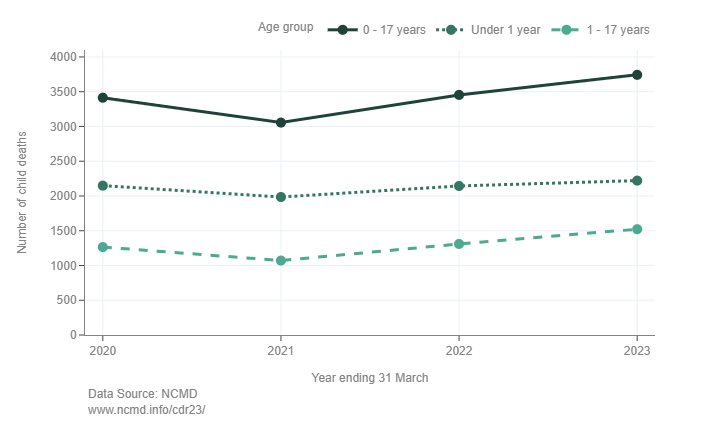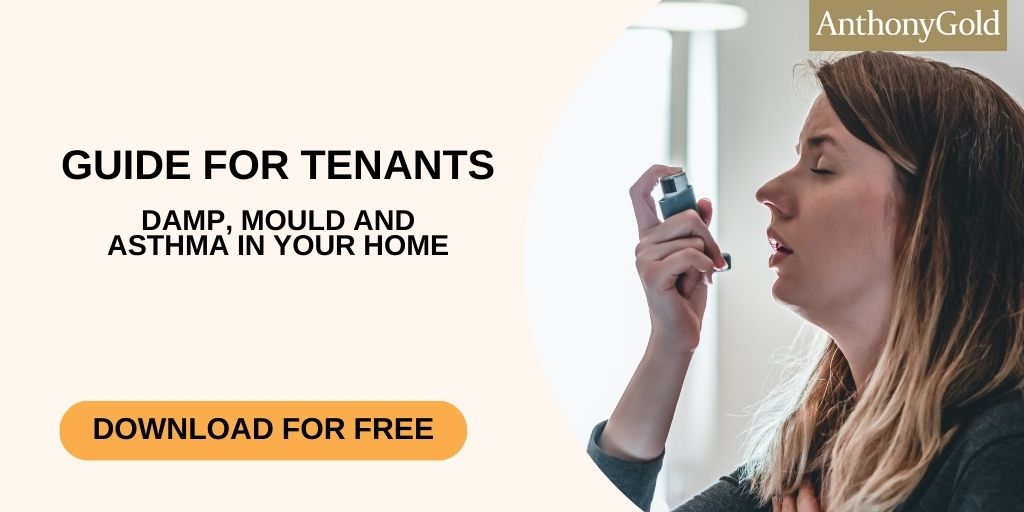Squalid housing is having a “profoundly negative impact on the nation’s health” and worsening the NHS crisis.

Once again, we see in the news the detrimental effects of poor housing conditions on the nation’s health which in turn contributes to the already overwhelming pressures on the NHS.
The focus of these news reports is the effects of mouldy homes on our children’s respiratory health. The fact that children are suffering avoidable life-threatening respiratory conditions because of unfit housing demands immediate action.
The Homes (Fitness for Human Habitation) Act 2018 requires that homes be fit for human habitation which means your home must be capable of occupation for a reasonable time without risk to the health or safety of the occupants, and without undue inconvenience or discomfort to the occupants.
Defects relating to damp and mould, poor ventilation, excess heat and cold, risk of falls and electrical hazards can all render a home unfit for human habitation. Having to reduce condensation, mitigate damp or clean mould regularly may equate to an undue inconvenience or discomfort.
In this article I, as a housing and injury solicitor, will explore the effects of housing disrepair on the NHS and whether is limited to child respiratory conditions – spoiler alert it is not.
Housing crisis and the associated poverty, health inequality and loss of life in the UK
In the past few months, there have been several published reports, government policies (or lack thereof) and campaigns, coupled with the annual weather-induced exacerbation of conditions in mouldy homes the health impacts of these homes have come to the media’s attention.
The clear conclusion is that poor housing conditions are putting an ever-increasing strain on the NHS and costing the taxpayer on top of the health impacts to residents. This is not a new or previously unknown problem but as the housing crisis worsens with little to no government intervention the problem grows and thus attracts more widespread attention.
Most of the recent commentary has been prompted by the National Child Mortality Database publishing a report summarising the number of child deaths up to 31 March 2023.

The figures show a clear association between the risk of children dying and where they live, those in England’s most deprived areas are more than twice the rate of those in the least deprived areas.
Upon reviewing the report, the Royal college of Paediatric and Child Health’s President Dr Camilla Kingdon has responded by saying ‘Poverty, health inequalities and the associated loss of life is not inevitable. Poverty is a political choice, and our government has had ample opportunity to tackle it.’
Respiratory conditions and hospital admissions
Children living in mouldy homes are three times more likely to develop asthma. Asthma is a potentially life-threatening condition, and most patients require prescriptions and routine NHS observational treatment by GPs, community clinicians and hospitals, as well as incidents of urgent medical care.
Patients who have asthma are more vulnerable to diseases and infections. Due to this vulnerability a common cough or cold can easily progress to a chest infection, pneumonia, bronchitis, or other associated conditions. These illnesses require prescription treatment such as antibiotics, steroids, and biologics.
Asthma makes it harder for a patient to fight of these infections and therefore they are often unwell for longer needing more NHS treatment time. Asthmatics are more likely to require a hospital admission for a respiratory illness that a patient without asthma could be treated for by their pharmacist or GP.
Cold, damp and mouldy homes make it harder to manage asthma symptoms, harder to fight infection and generally lead to a deterioration in health. Those living in overcrowded homes are more likely to catch contagious illnesses due to their close proximity with others.
Those living in mouldy and cold homes are also more likely to suffer acute respiratory illnesses even without an asthma diagnosis.
Therefore, those living in disrepair have higher A&E attendances and hospital admissions requiring a bed. This year NHS providers asked the government for an £1bn this winter and this was rejected by the government who have instead said the Treasury will give £100mil. NHS providers have reported this will put the winter extra escalations beds at risk. Extra escalation beds are additional beds made available for the increased winter admissions associated with illnesses.
Those with asthma caused or exacerbated by mouldy household conditions are often referred by their GP for ongoing hospital treatment, this is because usual GP treatment offers little effect as the mould continues to worsen a patient’s respiratory health and therefore requires more intensive treatment and detailed monitoring.
In September 2023, the NHS reported that within the last 3 years NHS waitlists for hospital treatment have almost doubled, with a huge increase in patients waiting over a year for treatment and a large proportion waiting between 18 weeks to one year.
Respiratory conditions and housing
Due to inaction by multiple governments and the housing sector to effectively tackle the housing crisis it is estimated that two thirds of the UK population now live in inadequate housing, as the housing crisis worsens it is no longer limited to tenants but also includes leaseholders and freehold residents; tenants remain the most detrimentally affected group.
Dr Andy Knox is a GP in Carnforth Lancashire and the Director of Population Health for the Morecambe Bay Health and Care System who was awarded an MBE this year for his work on health inequalities.
Dr Knox has commented specifically on housing and child healthcare as reported in the Guardian ‘squalid housing was [sic] having a “profoundly negative impact on the nation’s health” and worsening the crisis in the NHS. “It is becoming a really major health issue for us as a nation, and we need legislation that is going to properly deal with this”’.
Damp and mould in homes in disrepair worsen in the wetter months as there is more water entering the property, the damp is then unable to dry because of the increased water ingress and colder temperatures. Therefore, for those living in mouldy conditions, their housing conditions and health usually worsens at this time each year.
The government recently reneged on its promise to abolish Section 21 no-fault evictions leaving private renters in the position where a complaint about their housing conditions could elicit an eviction notice.
As a result, many private tenants are cautious to demand their landlords repair their homes to make them fit for habitation as it may elicit an eviction. Private landlords often require a reference from previous landlords which adds to the pressure on tenants to appease current landlords. This is exacerbated by discrimination in the housing sector, rising rents and demand for rented accommodation.
It is reported that social housing providers are increasingly telling tenants they must have been evicted by bailiffs following a Section 21 eviction process before being placed on the social housing register due to the lack of social housing.
The courts are experiencing substantial delays, in no small part due to the increase in Section 21 evictions meaning if a tenant is living in a mouldy home without the financial means to move to another privately rented property they are left to remain in the property for longer at risk to their household’s health. These court delays also impact those bringing claims for poor housing conditions and other housing-related issues.
Therefore, more residents are being left in mouldy homes for longer detrimentally impacting their respiratory health.
Do housing conditions only affect respiratory paediatric hospital admissions?
The short answer is ‘no’. These recent articles have been prompted by the Child Death Review Data and therefore focus on paediatric respiratory hospital admissions, however the effects on the NHS are much more far-reaching.
I attended a health inequalities training day for Northeast London NHS clinicians at Royal London Hospital this month, and I heard from GP’s community nurses, and emergency and departmental hospital staff that the housing crisis is affecting patients in every area of the NHS.
As I have addressed above those suffering respiratory conditions as a result of mouldy homes do not only attend emergency hospital departments, they also are treated by their GPs, respiratory clinics and out-of-hours services.
Mould triggers atopic allergic reactions even in those without allergies including complaints commonly seen by GPs such as postnasal drip. A common comorbidity of mouldy home conditions is skin irritation such as eczema, angioedema and alopecia. All of these usually require medical treatment, normally by a GP but sometimes warrant a hospital referral. Dermatological conditions are the second most common condition treated by GPs after back pain.
Respiratory and skin conditions are commonly a cause or exacerbator of mental health conditions such as anxiety and depression which can require NHS treatment. The stress of dealing with housing conditions and how tenants are often spoken to can cause or exacerbate mental health conditions again requiring treatment.
Unsuitable housing for those with various disabilities can also exacerbate health conditions, and where equipment cannot be used in the property a tenant may require more NHS community care assistance and possibly be admitted to hospital or a care home as their property is unsafe for them to live in.
There are numerous other ways housing conditions affect residents’ health. The Building Research Establishment undertook 10 years of research to understand the cost of poor housing and found that the first year of treatment, alone, for those affected by poor housing, costs the NHS more than £1bn a year.
What is being done about it?
This government disappointingly is not doing an awful lot The Building Research Establishment advised that a £250m investment into category 1 hazard damp and mouldy homes could unlock £4.8bn in societal benefit and the £9bn investment would unlock £135bn societal benefit over the next 30 years.
However this report came out around the same time The Department for Levelling Up, Housing and Communities returned £1.9bn to the Treasury after struggling to find projects to spend the money on. In 2022-23, the department also underspent on the affordable housing programme by over £600m, returned £245m meant for improving building safety post-Grenfell and £1.2bn meant for Help to Buy.
Therefore, government investment is needed but not happening and for the reasons listed above legislative change is also needed.
As such the NHS is stepping in to increase their understanding of the effects of poor housing on health and how they can assist patients. NHS providers are looking at ways to routinely gather information regarding patients’ housing conditions, work more collaboratively across departments to share holistic housing and health information about patients and write to or refer to relevant organisations that may be able to assist patients. This will help NHS providers understand the real-time and financial cost to the NHS from housing conditions.
Of course, NHS clinicians are not housing experts and have no immediate solution for a patient’s housing situation.
My colleagues and I will often see in our client’s housing and medical records numerous letters over many years from NHS clinicians to housing providers informing them of the detrimental health impacts of a home that are simply ignored.
Housing providers must take heed of the medical professionals’ opinions and not simply ignore them. This letter writing is again another burden to the NHS and, understandably, clinicians may become reluctant to continue writing letters when they have no impact however NHS providers are encouraging their employees to continue writing letters where necessary so that there is a record of the housing problems and health implications.
We are seeing increased instances of NHS employees requesting Housing Ombudsman involvement and Environmental Health Officer inspections, especially of mouldy homes, in the hope the patient’s housing conditions will be improved. Whilst this can and should result in an improvement to the housing conditions these organisations are also overwhelmed by the sheer number of residents requesting their intervention and as with the courts are experiencing delays.
Ultimately investment is needed as recommended by The Building Research Establishment and legislation is needed to protect tenants so that they can report and advocate for repairs from their landlords without the fear of eviction.
My house is mouldy, and my child has asthma, what can I do?
At the bottom of this article, you will find our ‘damp and asthma guide’ which gives in-depth information about your and your landlord’s obligations how to report issues, who you can escalate these issues to other than your landlord, what you can do to reduce condensation and seeking legal advice which I will not repeat in this article.
If your housing conditions are detrimentally affecting your or someone in your household’s health your NHS treatment provider may write to your housing provider. It is important to remember there is no obligation for them to do so and letters relating to housing can accrue a charge by GPs.
When asking your treatment provider to write a letter it is best to ask them to do so within their professional medical opinion, for instance, a letter requesting a property with a specific number of rooms with little information on how the current property is impacting health may have little effect.
A treatment provider will likely not have the relevant information on available properties, your entitlements and what a housing provider can achieve. Therefore it is best if a treatment provider instead comments on what about the current property is impacting your health and what needs to change to mitigate that, an obvious example would be a treatment provider writing on behalf of an asthmatic patient to confirm the patient is asthmatic, confirm that mould not only is a hazard to all but especially to asthma sufferers and as such the patient needs to live in a mould free home or their asthma will continue to be exacerbated.
If your GP refuses to write a letter or will only write a letter for payment, you can challenge this decision with them or their practice. An effective way to do so is if you have had increased appointments and treatment requirements as a result of your housing conditions you should raise that proportionately the letter writing will take less time than future appointments and may resolve the problem reducing the need for future appointments.
When asking a GP to write a letter based on their medical opinion rather than requesting rehousing the letter should effectively be the same content as your appointment note and therefore take very little additional time, this is also why it is best to ask for these letters at the same time as your appointment for your health condition.
So that your clinician understands your housing conditions it is a good idea to take photos to the appointment and show them to your clinician.
Do I have a legal claim as a tenant?
If you have suffered damp and mould, leaks, heating and hot water issues, infestations and other repair problems that have not been fixed within a reasonable time despite your landlord being aware of the problem(s), then you quite possibly have a disrepair claim which is assessed on an individual basis.
If your housing conditions have significantly worsened your, or a member(s) of your household’s, health and wellbeing either by causing asthma, physical injury, or substantially exacerbating a preexisting health condition(s), then you quite possibly have a personal injury claim which is assessed on an individual basis.
If you would like to speak to Anthony Gold Solicitors LLP about a potential disrepair claim causing illness or injury, you can contact us at hne@anthonygold.co.uk or call us on 020 7940 4060.
Are you a tenant and worried about damp, mould and asthma in your house?
Please note
The information on the Anthony Gold website is for general information only and reflects the position at the date of publication. It does not constitute legal advice and should not be treated as such. It is provided without any representations or warranties, expressed or implied.

Related Insights
- June 29, 2023
Mould Induced Asthma: Why Social Housing Needs To Act Now
- April 30, 2014
Guilty! Lambeth Council gets 3rd damp and mould conviction
- September 21, 2023
My landlord blames me for Damp and Mould! What are my Rights? What can I do?
Our Latest Housing & Property Disputes Insights
- October 3, 2025
The renters rights bill – Commonly asked questions – Quick Fire Q&A
- September 29, 2025
The Renters’ Rights bill and Awaab’s Law: Increasing responsibility for private landlords
- September 26, 2025
How will the Renters’ Rights Bill affect tenancies with very high rent?
- September 24, 2025
Leaseholder vs Freeholder repairs – who is responsible for what?
- September 15, 2025
Understanding service charges and service charge demands
- August 20, 2025
Rent increases after the Renters’ Rights Bill: What landlords need to know
Related Guides
Latest Articles
View allGuide: October 9, 2025
Guide: October 8, 2025
Contact the Conveyancing team today
Contact us today
"*" indicates required fields
Contact the commercial
& civil Dispute team today
"*" indicates required fields
Contact the Conveyancing team today
Contact the Conveyancing team today
Contact the Wills, Trusts
& Estates team today
Contact the Court of
Protection team today
Contact the Employment Law team today
Contact the Clinical Negligence team today
Contact the Family & Relationships team today
Contact the Personal Injury Claims team today
Contact the leasehold & Freehold team today
Contact the Corporate & Commercial team today
Contact the housing & disputes team
"*" indicates required fields















